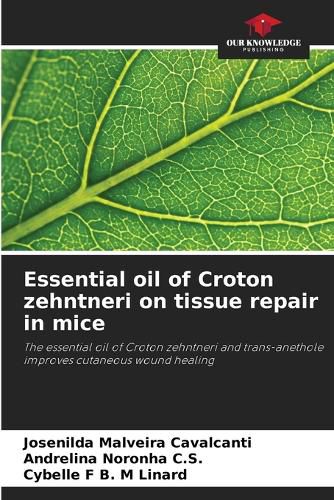Readings Newsletter
Become a Readings Member to make your shopping experience even easier.
Sign in or sign up for free!
You’re not far away from qualifying for FREE standard shipping within Australia
You’ve qualified for FREE standard shipping within Australia
The cart is loading…






Croton zehntneri Pax at Hoffm is a plant found in the Northeast of Brazil, mainly in the state of Ceara, popularly known as canela-de-cunha, where it is used as a sweetener for food and drinks, and its leaves are used in the form of teas and infusions to relieve gastrointestinal disorders (Craveiro et al., 1977; Craveiro et al., 1978). According to local reports, they are also used as a poultice to heal certain types of skin lesions. Oliveira et al. (2001) investigated the effect of the essential oil of Croton zehntneri (OECz) in experimental pain models, demonstrating antinociceptive activity, indicating actions at central sites, and also suggesting anti-inflammatory activity (OLIVEIRA et al., 2001). These results may indicate a healing effect of OECz on skin wounds, since the inflammatory response is a prerequisite for the tissue repair process (Porto et al., 2007). This work was carried out in the Experimental Physiology laboratory at the State University of Ceara.
$9.00 standard shipping within Australia
FREE standard shipping within Australia for orders over $100.00
Express & International shipping calculated at checkout
Stock availability can be subject to change without notice. We recommend calling the shop or contacting our online team to check availability of low stock items. Please see our Shopping Online page for more details.
Croton zehntneri Pax at Hoffm is a plant found in the Northeast of Brazil, mainly in the state of Ceara, popularly known as canela-de-cunha, where it is used as a sweetener for food and drinks, and its leaves are used in the form of teas and infusions to relieve gastrointestinal disorders (Craveiro et al., 1977; Craveiro et al., 1978). According to local reports, they are also used as a poultice to heal certain types of skin lesions. Oliveira et al. (2001) investigated the effect of the essential oil of Croton zehntneri (OECz) in experimental pain models, demonstrating antinociceptive activity, indicating actions at central sites, and also suggesting anti-inflammatory activity (OLIVEIRA et al., 2001). These results may indicate a healing effect of OECz on skin wounds, since the inflammatory response is a prerequisite for the tissue repair process (Porto et al., 2007). This work was carried out in the Experimental Physiology laboratory at the State University of Ceara.